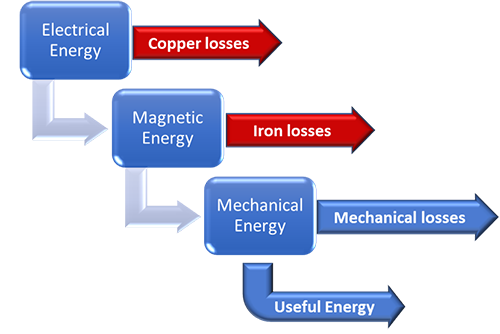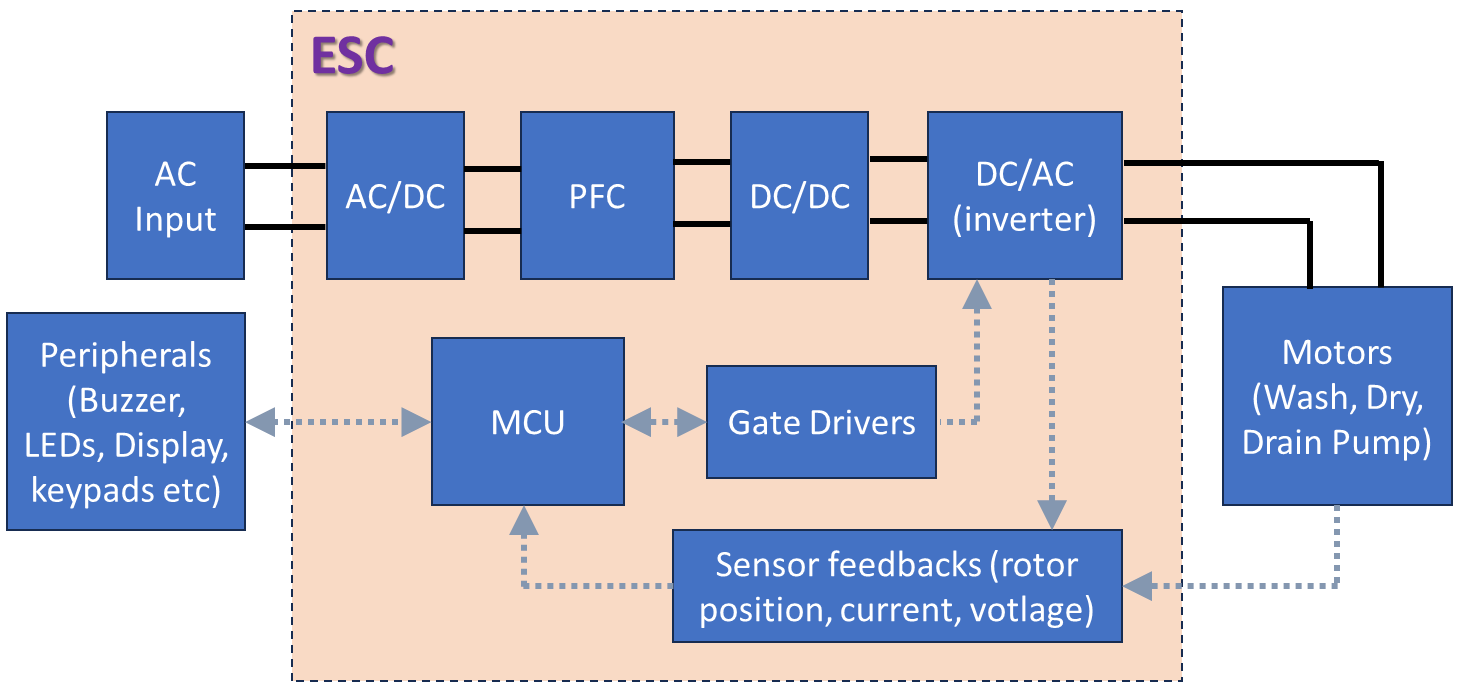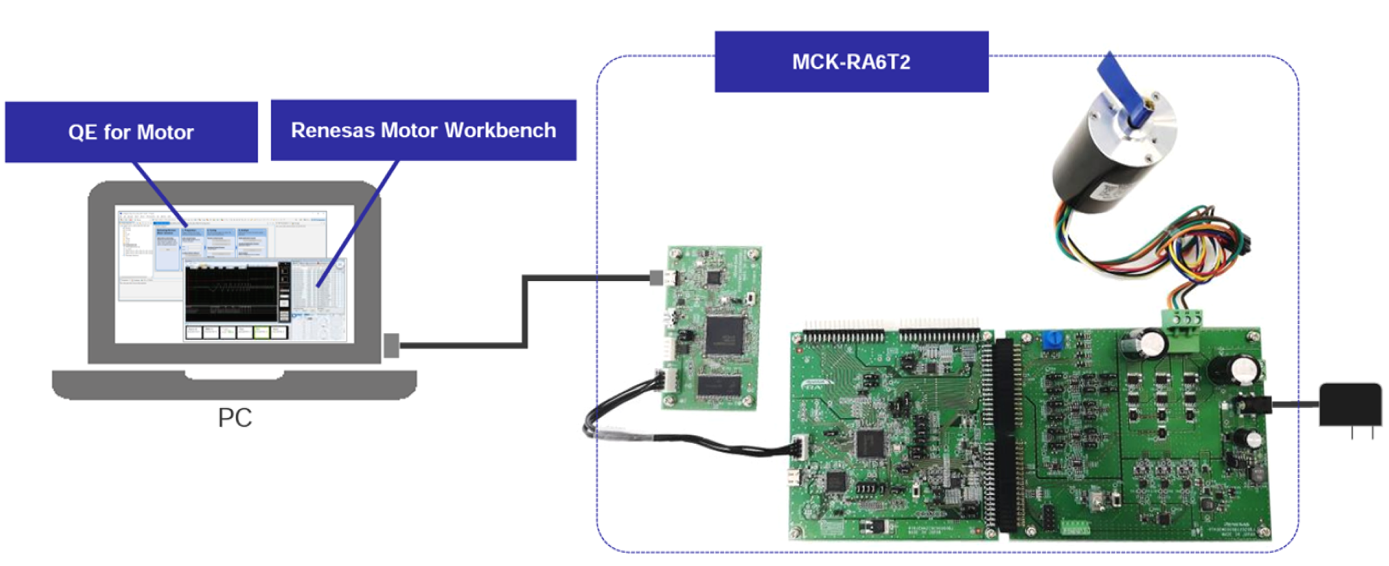Modern homes today are hubs of technological innovations. Various home appliances helping us in our day-to-day activities play an important role in this evolving reality, and there is a growing emphasis on energy efficiency and green energy. Authorities are not just widely promoting the use of energy-efficient appliances with star ratings but are also strictly implementing adherence to such policies by manufacturers.
A modern home typically utilizes an average of 10 to 15 motorized home appliances, with the expectation of rapid growth. The following table presents an overview of commonly used motorized appliances.
| Application | Type of Motor | Typical Rating (Watts) |
|---|---|---|
| Refrigerators and Freezers | BLDC1/SPIM2 | 60 - 400 |
| Washing Machines | BLDC/UM3 | 200 - 400 |
| Dishwashers | SPIM/UM | 200 - 400 |
| Vacuum Cleaners | UM/BLDC | 350 - 1500 |
| Ceiling, Exhaust Fans | SPIM/BLDC | 30 - 150 |
| Mixers, Grinders, Blenders, and other Food Processors | UM/BDC4 | 250 - 1000 |
| Hair Dryers | BDC | 1200 - 2000 |
| Air Conditioners | SPIM/BLDC | 300 - 3500 |
| Water Pumps | SPIM | 250 - 1500 |
| Submersible Pumps | SPIM | 250 - 2000 |
| Power Tools (e.g., Drills, Screwdrivers, Saw, etc.) | UM/BDC/BLDC | Varies Widely, 30 - 1500 |
1. BLDC: Brushless DC Motor
2. SPIM: Single-phase Induction Motor
3. UM: Universal Motor
4. BDC: Brushed DC Motor
Crucial factors for home appliances are power consumption, the size of the appliance, and operating modes. Operating efficiency becomes very important for some appliances like refrigerators and air conditioners, which are in use throughout the day. As seen from the table above, BDC, SPIM, UM, and BLDC are the most commonly used motors for such applications.

Figure 1. Energy flow in an electric motor
In recent times, BLDC motors have emerged as the most suitable motor technology due to their high efficiency, smaller form factor, and high-performance capability. As shown in Figure 1, the losses in an electric motor are categorized as copper loss, iron loss, and mechanical loss. Apart from motor design and materials, copper and iron losses are also affected by motor control. Since BLDC motors cannot be run directly via an AC or DC power supply, they need an electronic speed controller (ESC). The optimal design of an ESC is critical to extract optimal performance from the motor.

Figure 2. Typical block diagram representation for a highly integrated ESC
To optimize the performance of the Motor+ESC applications, several design considerations for ESC need to be taken into account. These considerations are outlined as follows:
Switching frequency. Maximizing the switching frequency is crucial to minimize the occurrence of harmonics in the electric current of the motor. High harmonic content in motor winding current can significantly increase the copper and core losses in the motor. Typically used switching frequencies for MOSFETs are 20kHz to 50kHz. However, with recent advancements made with GaN and SiC MOSFETs, switching frequencies up to more than 100kHz is becoming a norm. For this, the microcontroller and the rest of the ESC hardware must be capable enough for such fast computation and PWM generation.
Rotor position sensing. For a BLDC motor, accurate sensing of rotor position is extremely critical, as it governs the electronic commutation for the motor. In BLDC, the motor rotor position is sensed by physical sensors (Hall effect and encoders) or by sensorless techniques (Back Electro Magnetic Force (BEMF) sensing, observer method, etc). ESC hardware and software play a crucial role in position-sensing execution. An inaccurate rotor position sensing will increase the average current consumed by the motor resulting in higher losses, increased temperature, and reduced life of the motor.
EMI/EMC. An optimal EMI/EMC performance is always desired for home appliances because they do not interfere with any devices operating in the surroundings. For motor controllers, the EMI/EMC performance is mainly governed by switching power switches (MOSFETs). The switching frequency, gate drive current, and slew rates must be optimized for optimal performance.
Power factor correction. Home appliances generally operate on the single-phase AC supply available in homes. Since BLDC motors cannot directly operate on a single-phase AC supply, power converter stages like AC/DC and DC/DC are required to achieve the necessary DC voltage at the input of the ESC. The introduction of these additional power stages leads the appliance to behave as a non-linear load to the grid and operate at a lower power factor (typically 0.6 to 0.8). This lower power factor significantly reduces the energy efficiency of the appliance. Consequently, a power factor correction stage becomes indispensable to enhance the power factor and operating efficiency of the appliances.
Multi-motor operation. Appliances such as washing machines and HVAC systems require more than one motor to be the controller. In such applications, selecting a suitable MCU that can operate multiple motors simultaneously is crucial. This approach greatly reduces the part count, power consumption, and form factor of the ESC. Additionally, tuning only one controller for multiple motors significantly reduces design efforts.
Protections and peripheral interface. Apart from driving, the motor MCU in the ESC also needs to facilitate the operation of protection features like overvoltage, overcurrent, thermal, etc., and peripherals like display, indicator LEDs, buzzer, remote communication, data logging, etc. Therefore, a suitable MCU must be selected, which includes necessary interface modules such as ADC, DAC, and memory, and supports parallel operation of control logic.
As human civilization is aggressively progressing towards an automated world, developing efficient motor control solutions is essential. Renesas offers advanced motor control solutions with a complete support platform for developers. The following are specific, concise solutions by Renesas that are focused on quick and reliable motor control solutions development:
MCU. RX and RA series MCUs are tailored and made for motor control applications. These MCUs offer technically advanced features such as high clock frequency (up to 200MHz to 240MHz), higher operating voltage range (2.7V to 5.5V), higher flash memory (up to 1MB), simultaneous control of up to three motors, etc. Renesas RX and RA series MCUs exhibit three times higher performance compared to 32-bit MCUs from competitors. This allows users to adopt higher switching frequencies and sampling rates, enhancing the motor control accuracy. MCUs have 12/16 built-in high-speed A/D converters that can be used for active current sensing of all three phases simultaneously with the Power over Ethernet (PoE) protection feature. Hall sensor-based six-step (square wave) control of BLDC motor implementation is possible without any software with the AC synchronization motor drive mode of the MCUs.
Power converters. Renesas offers various solutions for all the power conversion needs classified mainly into AC/DC and isolated DC/DC. Renesas' range of solutions allows the developer to choose any power conversion or power factor control. These solutions are optimally designed for home appliances providing high efficiency, smaller form factor, and high reliability. Users can use 3-phase complementary PWM outputs with adjustable dead time supported by MCUs to effectively implement the 4-quadrant operation of the motor.
Smart 3-phase gate drivers. The gate driver plays an important role in the efficient operation of the power switches (MOSFET, IGBTs). Having a separate driver circuit increases the part count and also reduces the reliability of the circuit. In the present market, smart gate driver solutions are tailored for motor control applications. Each gate driver can support six N-channel MOSFETs. These smart gate drivers can support switching frequencies up to 200kHz.
Power MOSFETs. MOSFET selection is very critical for the energy-efficient operation of an ESC. Apart from required voltage and current ratings, reduced RDSON and high switching frequency are important parameters to be looked into for a MOSFET. A wide range of power MOSFETs with RDSON as low as 1.5mOhm is very suitable for energy-efficient applications.
Development support tools. The development of motor control for any application requires continuous tuning and testing of the system and is a very challenging task. Renesas offers various development support tools that can drastically reduce hardware and software development time for motor control solutions.
- QE for Motor. QE for Motor offers a simple workflow for designing motor control software. It supports the complete development process from implementation to validation. A variety of motor control programs are available (trapezoidal, field-oriented control (FOC), vector control, sensorless) for users to experiment with and choose the best one.
- Renesas Motor Workbench. With the Renesas Motor Workbench, anyone with basic motor control knowledge can experiment with motor control. It’s a comprehensive debugging tool for easy tuning and analyzer function for real-time display of parameters.
- Motor Control Evaluation System. Evaluation systems are specific starter kits prepared for quick development. These kits contain all the hardware required for spinning a motor. Starter kits combined with powerful support tools provide a complete platform for the rapid development of an efficient and reliable motor control solution.

Figure 3. Renesas support tools for rapid motor control development
Energy-efficient motor controllers can help reduce utility bills for consumers and can have a huge impact on energy consumption and the environment on a larger scale. This provides an opportunity for developers to develop energy-efficient solutions for the present and future. Renesas, with our commitment to energy efficiency, is just the right partner for your development with unique offerings in the field and unmatched resources for rapid and reliable development.
